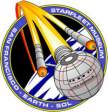 |
 |
Horizon-Class Explorers
![]() Diagrams
Diagrams
![]()
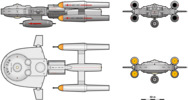 Orthographic views |
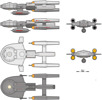 5 views |
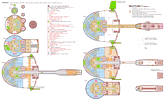 Deck plans, part 1 created by Allen Rolfes (see notes) |
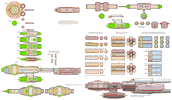 Deck plans, part 2 created by Allen Rolfes (see notes) |
![]() Scenes
Scenes![]()
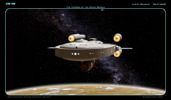 The Voyages of the Space Beagle created by Dragonpyper |
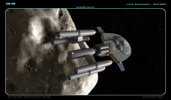 Asteroid Survey created by Dragonpyper |
 3D scene created by Thomas Pemberton |
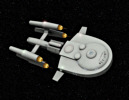 3D scene created by Thomas Pemberton |
![]() History
History![]()
The Horizon-class explorer (NCC-1197) of 2206 was the first Starfleet ship designed for long-range scientific missions in uncharted space. Although dismissed at the time as an idealistic extravagance, it was a forerunner of all future ships of exploration launched by Starfleet.
Limitations of Early Exploratory Missions
The modern Starfleet of the 24th century has coequal military and scientific missions. However, in the 22nd and 23rd centuries, Starfleet considered itself primarily a military organization with a secondary mission of exploration. Although exploration was important, it was simply considered a means to an end: locating habitable worlds for potential new colonies and outposts.
Although Starfleet's Exploratory Command undertook many notable missions between 2161 and 2200, the performance of their ships and their value for scientific research were limited in several ways. The longest-range starships of the era were those of the Hyperion class (NCC-851) of 2194, which had an unrefuelled range of 34 ly and stores for 20 months of operations. However, most explorers of the late 22nd century (notably, the Daedalus and Moskva classes) were able to visit only 3 or 4 star systems before returning to a starbase for resupply. Furthermore, most Starfleet ships were not equipped for extensive scientific research. Ships sent on survey missions carried sensors that were optimized for examining planetary bodies and mapping star systems, but were not as sensitive or adaptable as the sensors of modern starships. Finally, until the Hyperion class entered service, subspace-based sensors on most ships were passive, because subspace transmitters were too large to be installed on most starships.
As Starfleet ships ventured further into the galaxy in the late 22nd century, they more frequently encountered spatial anomalies, subspace phenomena, and other astrophysical oddities. Unfortunately, the standard sensors of the day were insufficient for gathering detailed data of energetic phenomena. Energy surges frequently overwhelmed sensors, which were then unable to capture the full scope of a phenomenon or were effectively rendered blind. Although sensor overload usually only limited the quality and quantity of data gathered, in several cases starships were endangered by their inadequate sensors. The best-known example is that of USS Da-Teplan (NCC-609, Sakal class), which was lost in 2183 while studying the internal structure of an ion storm near the Ninkasi system.
Several classes of dedicated scientific ships served in Starfleet, most notably the Mason-class surveyor (NCC-716) of 2185. These ships carried multiple arrays of powerful sensors, including a short-range subspace transmitter for sensor readings within 1 ly. However, these ships lacked the range and endurance for extended exploratory missions; they were only intended for intensive surveys of a single star system.
What Exploratory Command desired was a starship with the range, speed, and endurance of a heavy cruiser and the scientific facilities of a surveyor. However, until the late 22nd century, the technology did not exist to build such a ship. Even once the technology was developed, such a ship was likely to be extremely expensive to build and operate.
Fostering Starfleet's Scientific Mission
Although Starfleet Command of the late 22nd century was dominated by aggressive, mostly Human admirals who had seen combat in the Earth-Romulan War, Exploratory Command was staffed by officers with a different mindset. Commodore Matías Tolbert, who became commander of Exploratory Command in 2199, was an idealistic and adventurous officer. He had been eager to contact new races since his days as an ensign aboard the survey cruiser UES Ericson (CX-19, Republic class), which made Earth's first contact with the Altair system in 2155. As captain of USS Blériot (NCC-539, Gagarin class), he made the Federation's first contact with 8 races, including the Saurians. He believed that Starfleet's future lay in exploratory missions of the galaxy. To realize that future, he sought allies opposed to the militarization of Starfleet.
Ambassador Skon of Vulcan was a leading voice on the Federation Council against unrestrained expansion. Through the 2190s, he led a vocal minority faction of Council members who felt that the Federation was expanding too quickly and too far, and that Starfleet was placing too great an emphasis on military force to drive said expansion. Skon attempted to guide Starfleet towards a more peaceful position by blocking funding for planned vessels he considered to have only a military purpose. To avoid opposition by Skon, Starfleet developed the Paris class (NCC-882) of 2196, which, through the use of mission-specific equipment modules, had both scientific and military capabilities. However, Starfleet deployed Paris-class ships almost exclusively in military roles as scouts and escorts. Embarrassed by being deceived in this way, Skon decided to change tactics. If he could not restrain Starfleet's military ambitions, he would instead encourage a greater emphasis on scientific missions. He hoped that by undertaking more missions of exploration and gaining a greater understanding of the universe, Humans might become less aggressive.
On behalf of Commodore Tolbert, Skon submitted a funding request to the Federation Council for a new "explorer class" starship in April 2200. The proposal was controversial, because this explorer would be at least as expensive to build as a heavy cruiser, and likely even more expensive to maintain and operate. Expansionist members of the Council saw little value in a purely scientific starship, believing that Starfleet's existing cruisers and scouts were able to undertake exploratory missions. Even some opponents of militarization were hesitant to support the proposal, fearing that such a large and powerful starship could be diverted to combat and espionage missions. Skon and Tolbert were able to allay their fears, by pointing out that the proposed explorer's limited combat ability and extensive specialization towards scientific missions would preclude a repeat of the Paris affair. However, concerns about the expense of the project persisted, and the proposal was rejected.
In October 2200, the Federation Council began debate on the funding for a next-generation heavy cruiser, which would become the Lancaster class (NCC-1209). Employing a long-established legislative tactic, Skon threatened to block funding for Lancaster unless funding was also approved Commodore Tolbert's explorer. Despite fierce debate and accusations of delaying vitally needed Starfleet defense assets for "extravagant" scientific programs, funding was authorized for the design and construction of 12 explorers, in addition to 50 Lancasters. The new explorer would be called Horizon, named for Earth's first manned extrasolar spacecraft.
Horizon's Ambitious Specifications
The Ship Specifications Review Board, after consultations with Exploratory Command, set ambitious requirements for the design of Horizon. The specifications, finalized in June 2202, called for a cruising speed greater than wf 5 and an unrefuelled range of at least 100 ly. The ship was to carry 10 science labs, a crew of 300 (of whom 30% were scientists and laboratory technicians), and stores sufficient for an unprecedented 5 years of independent operations.
Most starship construction corporations were busy preparing designs for the lucrative 50-ship Lancaster class and showed no interest in the 12-ship Horizon class. Only 3 corporations submitted proposals for the Horizon-class project. The winning design, by the Dyson-Yoyodyne Consortium of Hyderabad, made full use of the latest technological advancements in warp propulsion, subspace sensors and communications, transporter-based component manufacturing, and robot-assisted hull assembly.

Horizon's saucer-like primary hull contained the now-standard bridge module, crew facilities, computer and sensor equipment, and defensive weaponry. The hull was extended aft to accommodate an enlarged shuttlebay, impulse block, and rotating outboard sensor panels to enable ultralong-baseline passive sensor readings. The reactor hull containing the M/AM reactor was mounted directly aft of the primary hull on a 43-meter neck. Up to 6 external modules with 14,500 m^3 of storage volume were mounted externally around the neck to carry additional deuterium fuel, bulk stores, cargo, or specialized mission modules.
Due to the long range and endurance required, the design board chose to adopt the new linear SSWR-VII matter/antimatter (M/AM) reactor, which had first been installed in the Asia class (NCC-945) of 2197. Although not as proven as the spherical-cavity reactor design in service since the 2150s, the linear M/AM reactor had benefits that perfectly matched Horizon's requirements. The dilithium-regulated reaction chamber offered a more efficient, sustained power output, enabling extremely long-duration cruises. The reactor's higher efficiency required less deuterium to be stored. Finally, the reactor's one drawback, that of reduced peak power output, was not considered a liability for a scientific explorer such as Horizon, which was not expected to perform high-speed combat maneuvers.
Controversially, the design board also chose to specify the mounting of 4 warp nacelles instead of the more conventional 2. This configuration had not been used in a front-line starship since the Yorktown-class carriers of 2158. However, despite the increased mass, 4 nacelles allowed the power load to be spread across a larger number of warp coils, thereby increasing their longevity. Also, if a nacelle were disabled far from Federation space, the ship could still return to base, or even continue its mission, with only 2 or 3 nacelles.
To enable long-range exploration of large areas of space and stable and timely communication with home, Horizon carried a large navigational deflector and subspace transmitter module below the primary hull. The sensors were of a higher resolution than any carried aboard other front-line starships, capable of analyzing both subspace and normal-space phenomena at a distance of up to 5 ly.
Finally, Horizon was equipped with the most powerful computer carried aboard a starship until that time, to process the massive amounts of information collected by the sensors. The new transtator-based celerotronic computer systems, developed in the 2190s, were capable of processing 50 kiloquads of data per second.
Due to the large volume of supplies, crew facilities, and redundant equipment carried on board for its extended mission profile, Horizon was a massive ship. By displacement, at 203,000 tons Horizon would be Starfleet's largest starship since the Conqueror class of 2159.
Service History
USS Horizon (NCC-1197) was launched with little fanfare from the Copernicus Shipyard orbiting Luna in July 2206. The remaining 11 ships of the class entered service over the following 4 years. Horizon's shakedown cruise was a 9-month survey of star systems in the Hyralan sector (more than 4 pc beyond Federation territory), which had been charted a decade earlier but never explored because of the small number of habitable worlds. Following the successful completion of this survey, Horizon departed on a 3-year mission beyond the Groma Hollow, a region believed to contain numerous inhabited class-M worlds. On this cruise, Horizon travelled more than 150 ly, surveyed more than 7,000 ly^3 of space, and made contact with 4 spacefaring races previously unknown to the Federation.
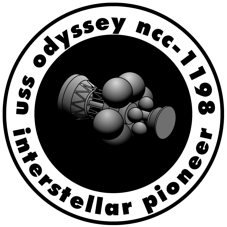

As more Horizon-class explorers entered service, they encountered wondrous lifeforms and previously undescribed phenomena. USS Venture (NCC-1199) was the first starship to encounter a complex space-dwelling lifeform in 2207, a nonsentient species named the Kento. USS V'Shon-Pal (NCC-1200) was the first starship to survey the Mutara Nebula in 2208. USS Yinghuo (NCC-1203) discovered ruins left by an ancient race called the Preservers in 2210.
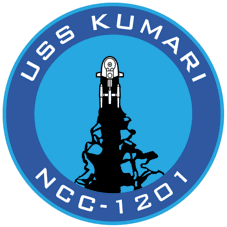
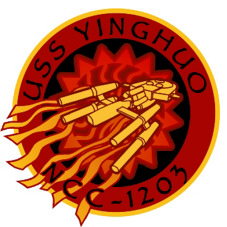
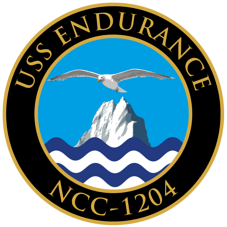
Horizon's unprecedented range enabled Starfleet to launch its first 5-year missions. USS Odyssey (NCC-1198), under the command of Captain Fabiola Kalani, departed Starbase 12 in March 2209 and spent 62 months exploring sectors spinward of the Rigel system. During this mission, Odyssey set numerous Starfleet records for sustained speed, distance, and endurance and made contact with 12 spacefaring races, including the Edosians.
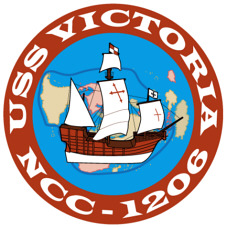
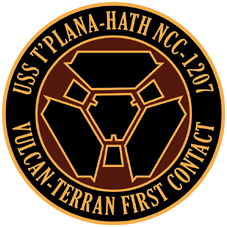
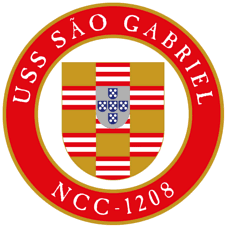
The 5-year missions undertaken by Horizon-class ships inspired a new generation of officers in Starfleet, men and women who were eager to travel into space, not to defend their homeworlds but to experience the excitement and adventure of an unexplored frontier, or to gain a greater understanding of the universe through scientific exploration. These officers often had few ties to life on their homeworlds and were happy to spend their entire lives in unexplored space. Furthermore, research into the physical sciences (chemistry, geology, climatology, as well as particle, quantum, and subspace physics) and the social sciences (xenolinguistics, anthropology, sociology, and archaeology) all gained favor within Starfleet and were considered admirable and desirable fields of study.
Funding for Exploratory Command became an issue again following Skon's death in 2208, as over the next 10 years, resources were gradually directed away from the exploration and research programs and back towards defense. Due to the shortage of funds, no further explorer starships entered Starfleet service until the Aryabhatta class (NCC-1446) of 2222, which was a much smaller and less costly explorer.
Although its intended missions were entirely peaceful, Horizon-class ships were occasionally diverted to border patrol and long-range observation missions by more aggressive-minded admirals in Starfleet Command, especially as the Federation's conflict with the Klingon Empire escalated in the 2220s. Horizon's unparalleled sensor suite made it useful for monitoring large areas of space. Fortunately for Exploratory Command, such missions were rarely ordered because they frequently required additional ships to protect the Horizon from any hostile forces.
Horizon-class starships remained in service until 2254, performing hundreds of missions across thousands of cubic light-years of space and enlarging known space to an enormous degree. Only a single Horizon-class starship was lost in the line of duty. USS Victoria (NCC-1206) was destroyed in 2235 while attempting to survey a particle fountain discovered in the Moab sector. By the time the Horizon class was retired, its exploratory duties had been passed to the new Constitution-class heavy cruiser, which entered service in 2245. Although not primarily considered an explorer, Constitutions undertook extensive missions of science and exploration. As Commodore Tolbert predicted, the future of Starfleet depended on the peaceful exploration of unknown space and the accumulation of knowledge about the universe.
The Horizon-class explorer USS Odyssey (NCC-1198), a veteran of four 5-year missions, is on display at the Starfleet Museum.
![]() Commissioned Ships
Commissioned Ships![]()
| USS Horizon NCC-1197 USS Odyssey NCC-1198 USS Venture NCC-1199 USS V'Shon-Pal NCC-1200 USS Kumari NCC-1201 USS Beagle NCC-1202 |
USS Yinghuo NCC-1203 USS Endurance NCC-1204 USS Nadezhda NCC-1205 USS Victoria NCC-1206 USS T'Plana-Hath NCC-1207 USS São Gabriel NCC-1208 |
![]() Specifications
Specifications![]()
Standard displacement: 203,381 mt
| Overall | 1° Hull | 2° Hull | Nacelles | |
| Length [m] | 232.98 | 99.68 | 74.56 | 121.22 |
| Beam [m] | 136.70 | 87.01 | 16.41 | 16.14 |
| Draft [m] | 55.79 | 30.67 | 18.92 | 16.14 |
Crew complement: 325 (52 officers + 273 crew)
Weapons: 5 Type V phaser turrets (5 × 1 mounts), 1 probe/missile launcher with 15 Trilobite missiles
Embarked craft: 4 medium cargo/personnel shuttlecraft, 4 light personnel shuttlecraft, 12 personnel shuttlepods
Warp drive: SSWR-VII-C linear M/AM reactor with 4 Ultima nacelles
Velocity: wf 5.3, cruise; wf 5.6, supercruise; wf 5.7, maximum
Units Commissioned: 12
Credits: Concept by Dan Carlson, design by Masao Okazaki and Dan Carlson and Allen Rolfes, text by Dan Carlson and Masao Okazaki.
![]()